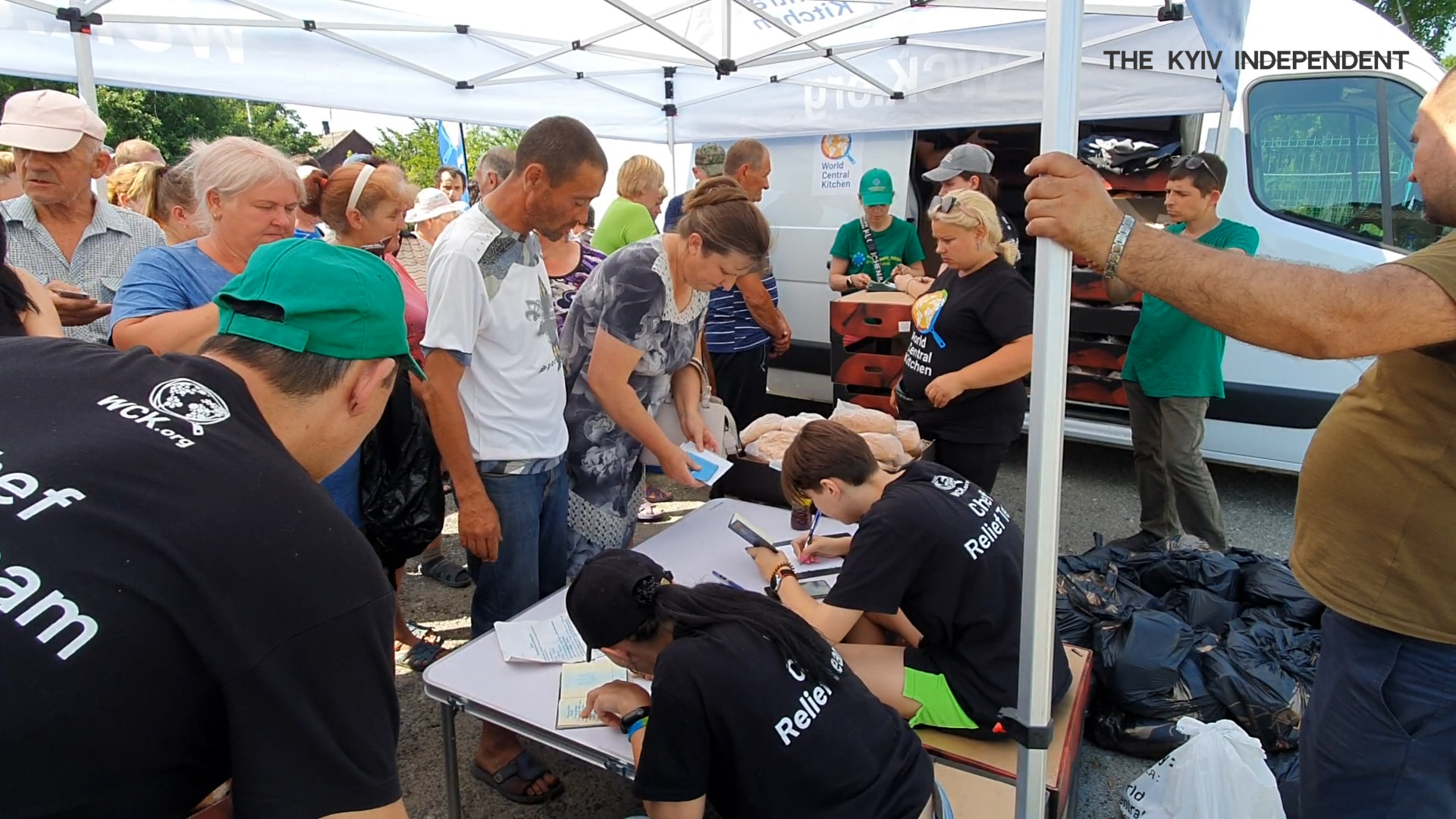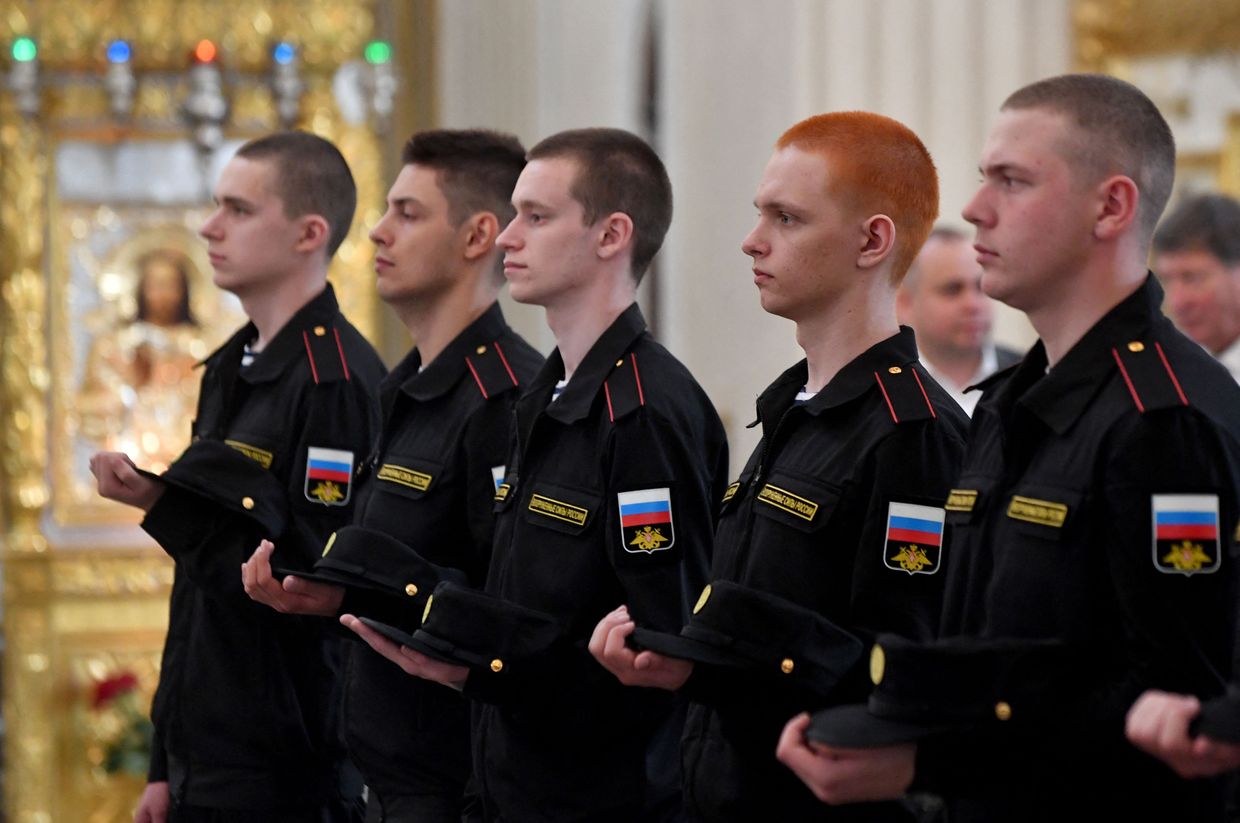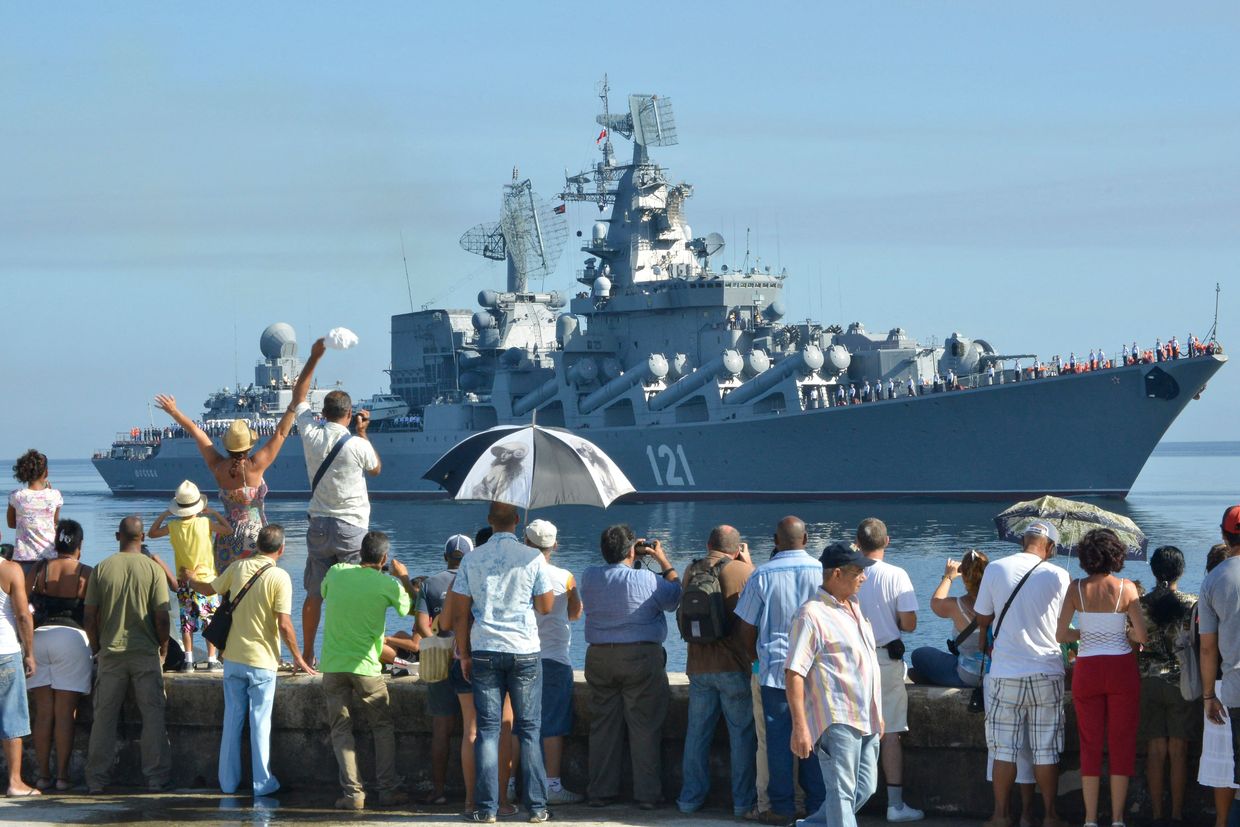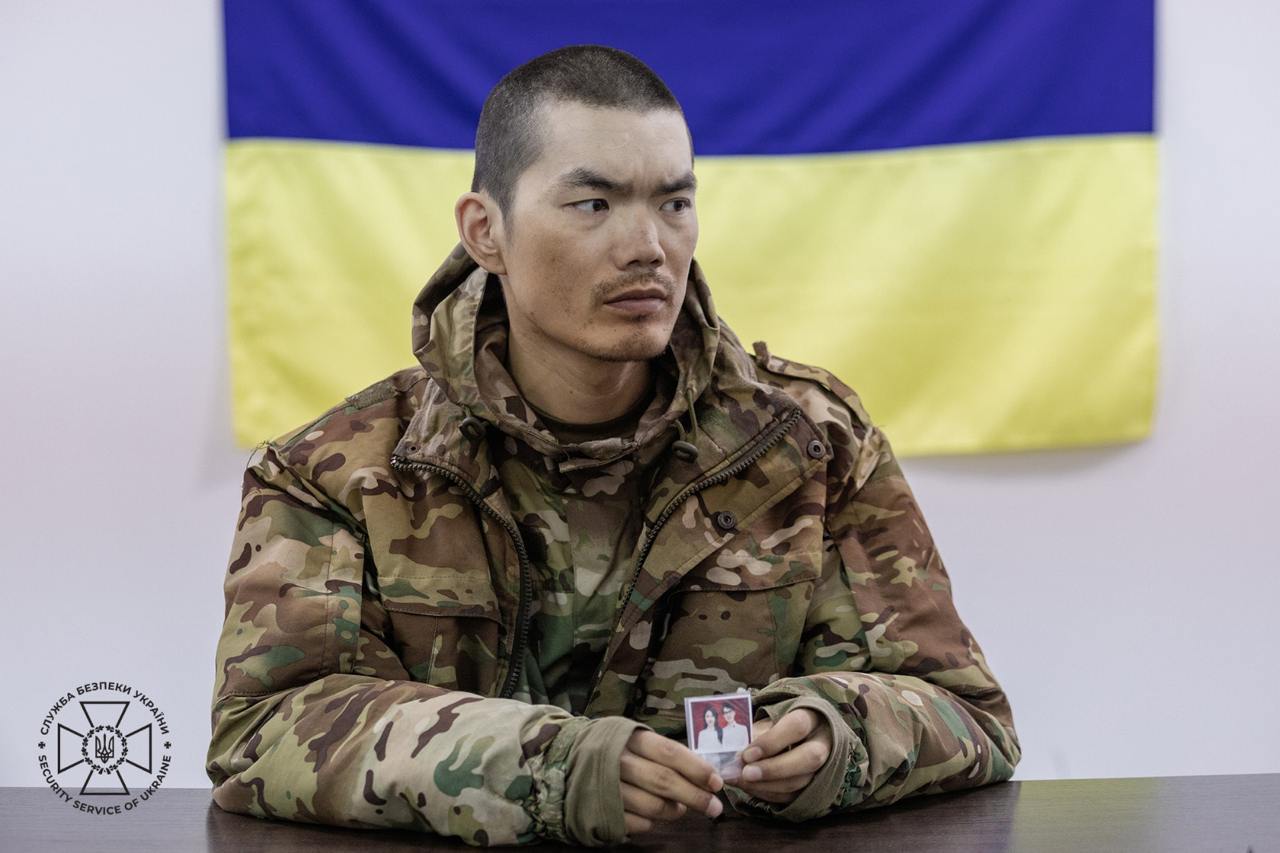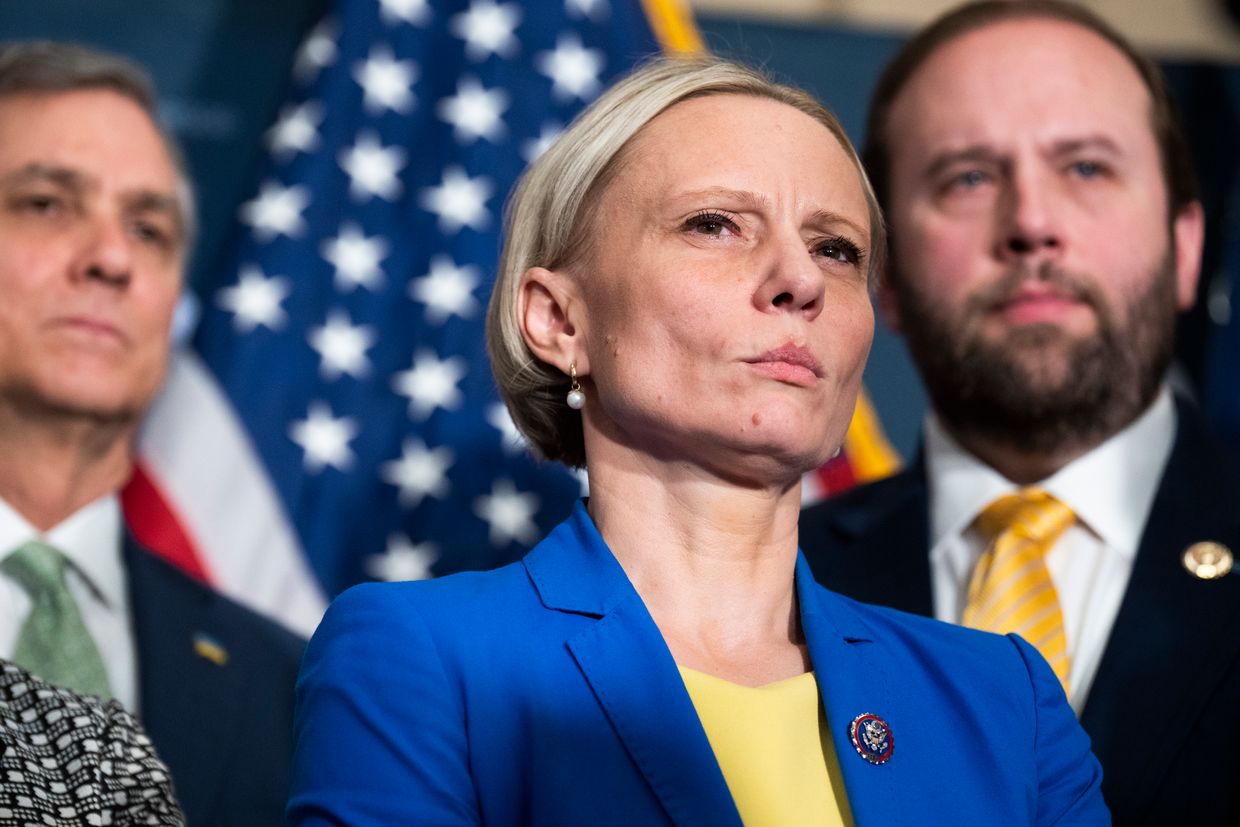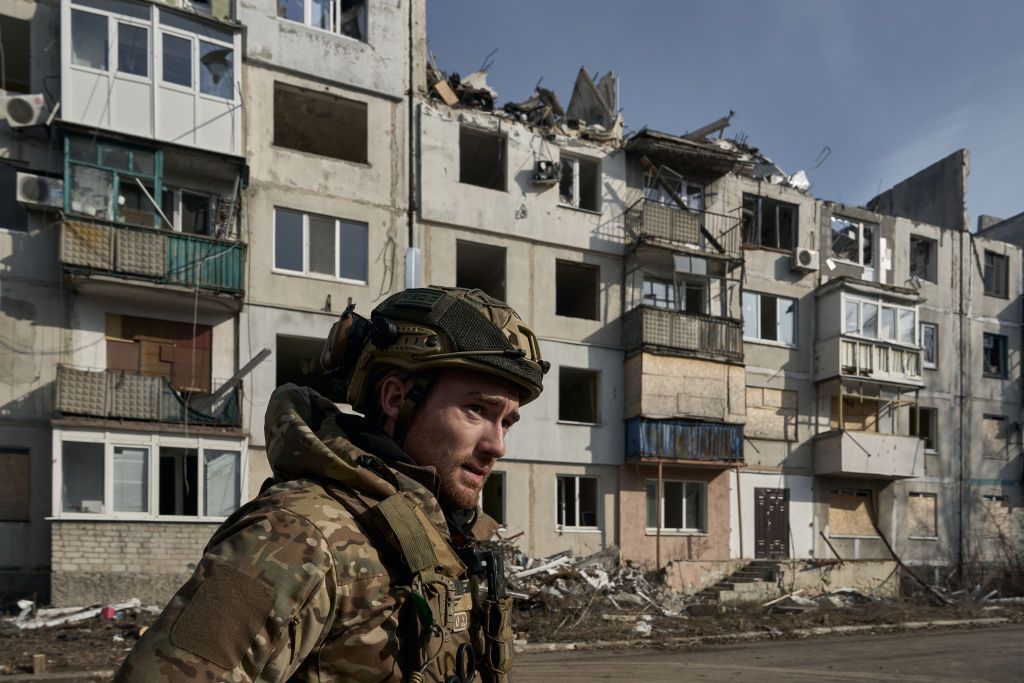As the four-van convoy rolls into the village of Stepanivka in Donetsk Oblast, volunteers hop out and raise a large tent to shield them from the summer sun.
A small group of local onlookers quickly grows as people stream out of their homes towards the tent. The humanitarian aid is here. As the vans’ doors slide open, volunteers unload hundreds of bags filled with staple foods, canned meat and vegetables, bread, and other provisions, as people line up with IDs in hand.
This delivery, on June 11, is the first volunteer humanitarian aid delivery the villages of Stepanivka, Iverske, and Shestakovka have seen since the war began. Two previous humanitarian deliveries had arrived from the regional government.
“People with proof of residency, please line up first,” volunteers call out, trying to organize the excited crowd, as they get behind a makeshift table. People who officially reside elsewhere will also get their turn. “There is enough food for everyone.”
The air smells of fresh bread, as the packages begin to flow. Bereft of expensive gasoline, the locals tie the bags to their bicycles before making their way back home.
As Russian forces push across the Donbas, trying to capture all of Donetsk and Luhansk oblasts, many civilians are forced to leave. Yet many have nowhere to go, and they remain in their cities, towns and villages.
Over time, many of those that left ran out of money and are forced to return.
“Sixty two percent of the village left,” said Valeriy Davydenko, the village head of Stepanivka. “But two months later, they’ve started to come back.”
“They have spent all the savings they had, so they are forced to come back home and grow vegetables to survive the (next) winter,” he added.
Humanitarian aid, provided by local authorities and volunteers, is what’s keeping many villagers afloat.
Bringing food to Donbas
The Vse Bude Dobre (All Will Be Well) organization unites NGOs in delivering food and other essentials to people living in the war-torn Donbas.
Vse Bude Dobre does its job thanks to the Fishing Club of Ukraine, Access Point, Eduard Mktrchan Charitable Foundation, Development Agency Our Kramatorsk, IT Cluster Donbas, and Smarta, as well as the Donetsk Regional Military-Civilian Administration.
The group works in close cooperation with the large American non-profit World Central Kitchen.
Based largely in the city of Kramatorsk, the alliance has four humanitarian disbursement points in the city, which hand out a combined 3,000 food parcels every weekday.
They also deliver about 1,000 parcels per trip when they visit Donbas hotspots, both to support the locals and help evacuate those in need.
Many of the alliance’s volunteers, like Bogdan Novak, work without breaks or weekends.
In addition to helping distribute food, Novak, who works with the Eduard Mktrchan Charitable Foundation, organizes lessons, games, and activities for children and their parents, so that they could distract themselves from the fighting happening in the region.
“We try to do fun activities for the kids, like games, crafts, or drawing. We try to give them candy or presents,” he said. “The children are excited and like to come early.”
In his free time, he often buys medication using his own money and delivers it to senior citizens living in Kramatorsk.
On the weekends, the organizations take convoys to outlying villages. While not all of these villages have endured humanitarian crises, life has become significantly more difficult since the war began.
Olena Pshechenko, who lives in Shestakovka with her two children, aged 13 and 19, and her husband who’s recovering from cancer, said that while days can be spent in work that distracts from the war, nights are difficult and scary.
“It’s hard because you can hear the flybys, the explosions,” she said. “Sometimes you come out to the garden and see a glow from the direction of Kramatorsk. It’s scary not for me but for the kids.”
Food aid runs out quickly when one has to feed a household of four, she added. The financial aid Pshechenko gets from the government is barely enough.
Many locals, who used to work in state-run mines, have been unable to work or collect their salaries, which makes life especially hard for them.
While there are at least one or two stores in each village that the volunteers visit, the prices have all spiked due to the war, as fuel costs are exorbitant and supplies run low.
Furthermore, Kateryna Onyshchenko, the coordinator of the charity alliance, said that access to water and electricity remains a problem across a large part of the Donbas, where the volunteers are active.
However, the villages sometimes have an easier time getting access to water than those who live in the city, thanks to their wells and the lack of need to rely on centralized plumbing, according to Novak.
In addition, villagers said that they often lack hygiene products, such as diapers for both children and adults — some elderly residents are unable to walk and require constant care.
Medication for chronic conditions can also be hard to come by. Hospitals in Kramatorsk also rely heavily on volunteers to have the meds and supplies they need.
Last but not least, everyone needs food, especially basic staples like bread, as humanitarian parcels meant to last two weeks, run out quickly.
But there is another need that’s just as critical to these people’s survival: heavy weapons and ammunition.
The more long-range firepower Ukraine can bring to bear against Russia, the more territory it can protect and the more it can push the Russians back, relieving the pressure on civilians and soldiers alike.



